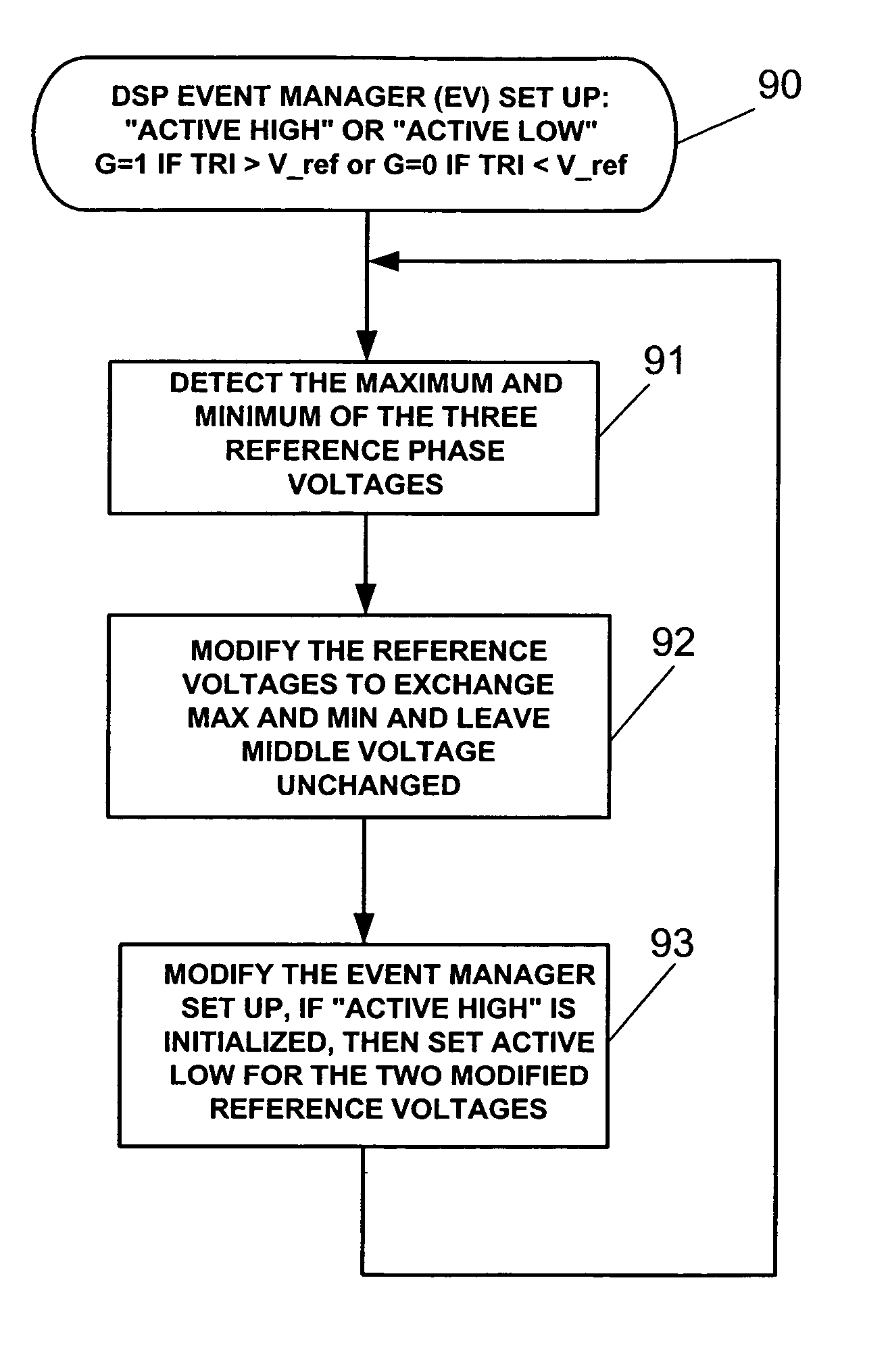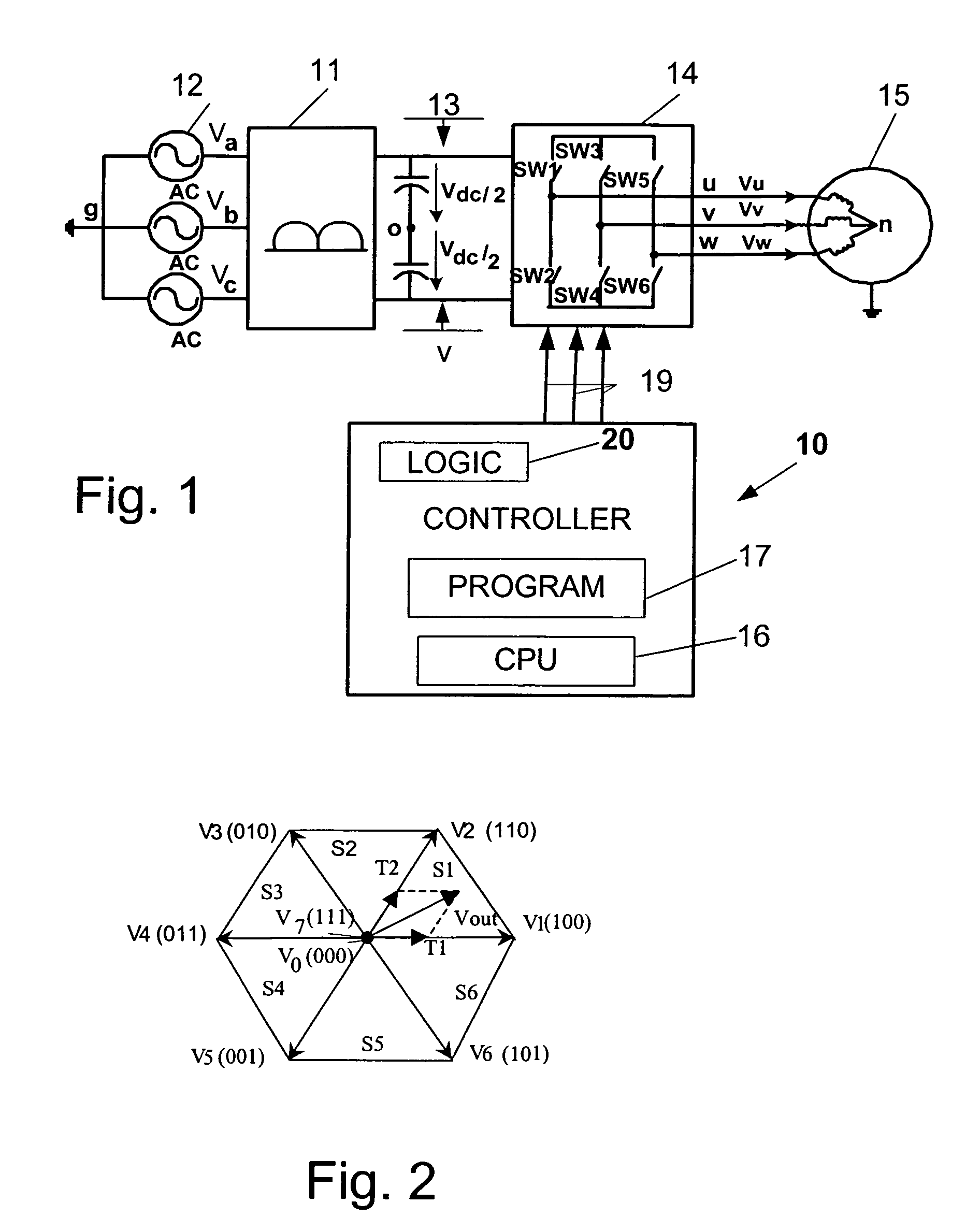Modulation methods and apparatus for reducing common mode voltages
a technology of modulation methods and ac motors, applied in the direction of motor/generator/converter stoppers, dynamo-electric converter control, dc-ac conversion without reversal, etc., can solve the problem that the svpwm strategy cannot be applied to the diode front-end variable frequency drive (vfd) system, and the production cost and installation cost increase, so as to reduce the peak-to-peak common mode voltage and cost reduction
- Summary
- Abstract
- Description
- Claims
- Application Information
AI Technical Summary
Benefits of technology
Problems solved by technology
Method used
Image
Examples
Embodiment Construction
[0026]FIG. 1 illustrates a block diagram of an AC drive controller 10 for controlling an AC-to-DC converter 11 including a converter, for example, a boost rectifier, for converting three-phase AC source voltages, Va, Vb and Vc, from an AC voltage supply 12 to DC voltages, Vdc, on a DC bus 13. The DC bus 13 interfaces the AC-to-DC converter 11 to a DC-to-AC inverter 14, which is typically a three-phase bridge network of solid state switches SW1–SW6, which are switched at high frequency to generate pulse width modulation (PWM) or other types of modulated low frequency power signals Vu, Vv, Vw, which are applied to an AC motor 15.
[0027]The controller 10 includes a microelectronic CPU 16 operating according to instructions in a control program 17 stored in memory. The program 17 includes instructions for performing regulation of a DC bus voltage and regulation of current supplied to the motor 15. The controller provides gating signals 19 to control the switching of the switches SW1–SW6 ...
PUM
 Login to View More
Login to View More Abstract
Description
Claims
Application Information
 Login to View More
Login to View More - R&D
- Intellectual Property
- Life Sciences
- Materials
- Tech Scout
- Unparalleled Data Quality
- Higher Quality Content
- 60% Fewer Hallucinations
Browse by: Latest US Patents, China's latest patents, Technical Efficacy Thesaurus, Application Domain, Technology Topic, Popular Technical Reports.
© 2025 PatSnap. All rights reserved.Legal|Privacy policy|Modern Slavery Act Transparency Statement|Sitemap|About US| Contact US: help@patsnap.com



